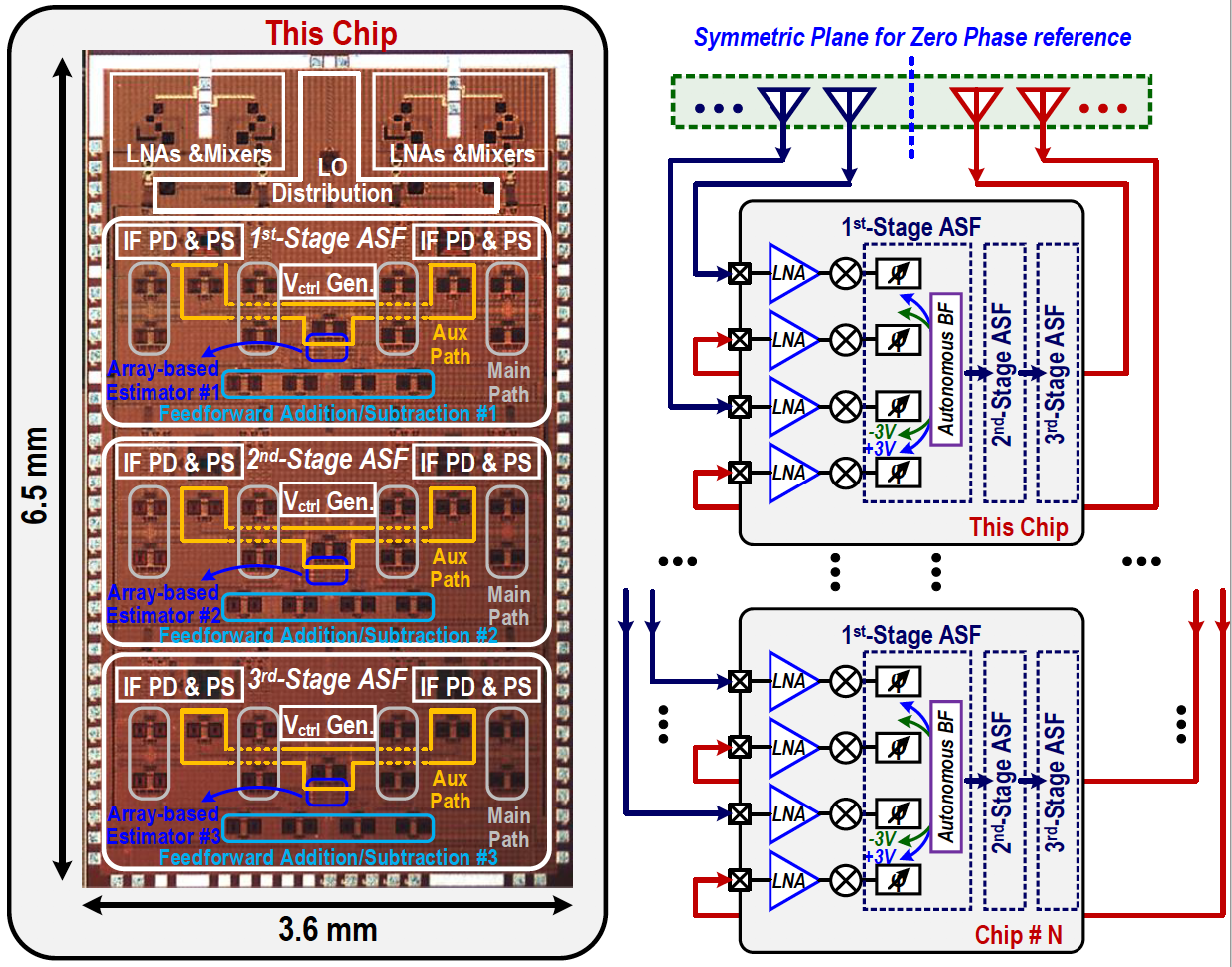This wideband wireless transceiver architecture for N-input-N-output multiple-input multiple-output (MIMO) systems provides agile, spectral-spatial front-end filtering for instinctual blocker suppression and “power-equalizing” of desired signals. Georgia Tech’s technology enables multi-beam, high-capacity massive MIMO—filling a critical need in the rapidly growing deployment of millimeter (mm)-wave links in commercial and defense applications, such as 5G communications and fast-moving drones.
Surpassing the previous state of the art, Georgia Tech’s Rx-array employs scalable, cascadable high-order autonomous spatial filters (ASFs) as a “smart” spatial filter bank for rapid unknown blocker suppression to facilitate digital beamforming. The ASFs autonomously sense, control, and process signals with high-data-rate (multi-Gb/s) over full field of view (FoV) with ultrafast (μs) response time.
With no available equivalent, Georgia Tech’s technology is the first demonstration of an N-input-N-output MIMO Rx-array with autonomous and instinctual full-FoV multi-blocker/signal management without the use of any digital beamforming aid. Covering a wide broadband frequency range (27 to 41 GHz) and the full-FoV spatial range, the technology addresses multiple challenges encountered by low-latency MIMO systems.
- State-of-the-art: Is the first Rx-array design of its kind, autonomously achieving modulated blocker suppression and desired signal beamforming simultaneously without the need for a digital beamforming aid
- Robust: Enables multi-beam high-capacity massive MIMO to address the demands of both commercial and defense applications
- Scalable: Employs ASFs that achieve 4-element spatial filters with sharpened selectivity that can be extended to larger array sizes of thousands of elements and cancellation of any number of interference signals
- Wideband: Covers an extremely wide broadband frequency range and the entire spatial range
Georgia Tech’s technology is broadly applicable to radio frequency (RF)/mm-wave wireless communications, especially the proliferation of mm-wave links in commercial/civilian and defense/military applications, such as:
- Mobile 5G communications
- Base station and cell tower communications
- Autonomous driving (e.g., vehicle-to-vehicle radar/sensing)
- Fast-moving drones radar/sensing
- Advanced/Intelligent radar systems
- Augmented reality/virtual reality systems
The deployment of mm-wave links, which is growing rapidly in commercial and defense applications, often exposes the transceiver (Tx/Rx) front ends in complex electromechanical environments to multiple fast-changing yet unknown blockers. To preserve full-FoV and multi-beam/MIMO operations, digital arrays often skip FoV-limited front-end beamforming and rely on digital back ends for spatial filtering. However, in order to handle all of the aperture information and avoid hindrance of digital beamforming caused by strong signals/blockers, high dynamic range is needed. To address these challenges, Georgia Tech’s technology provides a first-of-its-kind solution with agile spectral-spatial front-end filtering that achieves instinctual blocker suppression and “power-equalizing” of desired signals.

A chip micrograph of Georgia Tech’s N-input-N-output MIMO Rx array.
